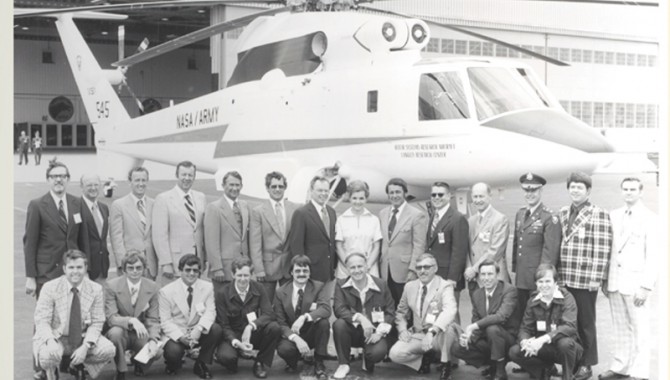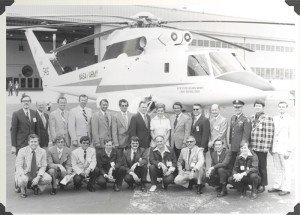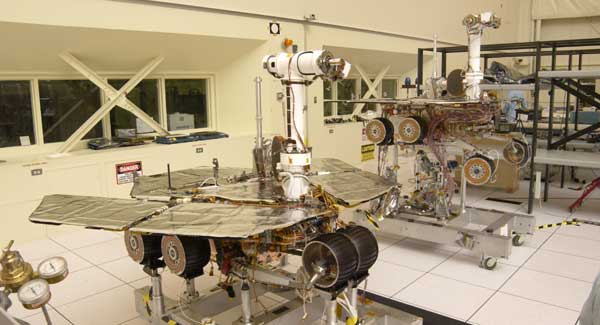
By Angelo (Gus) Guastaferro
In 1977, I had just finished eight years on the Viking program, which was just a marvelously rich, fascinating experience, using the most up-to-date, sophisticated management techniques, under an outstanding leader named Jim Martin. After that, you could say the opportunities available to me within NASA in some ways were limitless.
I remember quite vividly when I got the phone call from Ed Cortright, who was the Langley Center Director at the time, with news about my next assignment. He asked me to come to the aid of a project that was in trouble, the Rotor Systems Research Aircraft (RSRA).
“Are you sure you got the right guy?” I asked. “You’ve got so many aeronautical researchers at this center and you pick on me. I don’t know anything about this technology.”
the best they could get it, and this was costing
a lot of money and a lot of time.
“This is not a mistake,” he assured me. “You’re the person I want to do this.” Cortright recognized that bringing this project to its end point would require someone with my skills — not necessarily me, but somebody like me who could drive the objectives of the program towards the plan already laid out. On Viking, we said we were going to land a spacecraft on Mars and do science there. Every decision we made was focused on that, so we learned to pay attention to our objectives.
Cortright’s concern was that unless someone with a real project background came in to deal with the contractor who was building the aircraft, it could become a continuous sandbox research program. They were trying to make the technology the best they could get it, and this was costing a lot of money and a lot of time. It’s like you’re trying to get to 99-percent pure. Well, you have to learn sometimes that 95-percent will work, and that requires you to force people to make decisions to get it done.
The project manager was also the researcher who had designed this aircraft. The whole project was his idea. He had worked in helicopter research for 28 years. I would say he probably had spent seven or eight years getting the project approved. Then he spent another three years working on it. Altogether a decade of his life was invested in this project. It was going to require a delicate touch for me to step in and help him understand that this was what was best for the project. I realized that this was his baby, there was no doubt about that, and I had to promise him that I was going to take care of his baby.
One of the things that made this project exciting to me, and why I was keen to accept the challenge, was that in spite of decades of leadership in aeronautics, my center, Langley, had never designed its own fully integrated airplane, except for this one. I said to Cortright, “Well, before I say yes, let me go talk to the individual.” I told him that I wouldn’t make a decision until I understood the problems, and I wanted to understand them from the project manager — not from a third party, but from the person running the project.
A meeting of minds
I went to see him. Nothing had been announced yet, and I didn’t tell him I was considering taking over the project, but he knew something was up. He was not dumb. I was not there because I had nothing to do for lunch. I just said I was asked by the director to get a rundown of what he was doing. To his credit, the manager was forthcoming with details.
So, I went back to Cortright and said, “I’ll take the job, if you still want to offer it to me because I understand what the challenges are and what the problems are. I believe I can help, but I want to keep the current manager as the chief engineer.”
When Cortright made the call to the project manager to tell him he was going to be replaced, I wanted him to explain it in no uncertain terms, “Hey, you’re going to be replaced, but Gus would like to have you on his team. He needs you.”

First-generation Rotor Systems Research Aircraft team. Gus Guastaferro, project manager, fourth from right.
And it’s true, I did. It would have been very hard for me to take over this project without his smarts. I had a pretty good sense of my own weaknesses. I didn’t come there as a helicopter research specialist. I was expected to step out of the space world, because remember Viking was an outer space mission, and enter this new world of aeronautics. I could have said I don’t need this person and gone out and hired a different chief engineer. My management would have supported it.
But how you handle a transition like this is important. There was no guarantee my method was going to work, but I had previous experience in two situations like this where the manager was forced to leave and I had to take over, and I did not want to repeat what happened to me in either of those cases.
Flashback
Once, I had to take over management of a critical resource without the help of the previous project manager because he was fired. It was then I learned how difficult it is to pick up where someone else has left off — without that person’s knowledge to rely on.
Another time, on Viking, I faced a situation similar to what I was facing on RSRA. In 1973, a little more than two years before launch we ran into problems with one of the instruments. Jim Martin said, “You’re no longer the management operations director. I’m putting you on this instrument, and you’ve got to go make it happen.”
Again, I offered to make the instrument manager my chief engineer. I could have easily let him go, but I decided that he should still be on the team. I wanted to make him a part of the solution rather than a part of the problem. The worst thing is to say, “Hey, thanks for being around. Good luck. Have a good life,” and then walk away. That’s a big mistake. You have to be sensitive to that transition. Nobody likes to be replaced.
Hence, I did the same thing that I did on the RSRA, but the difference was that the instrument manager on Viking wasn’t a researcher, he was a project type, and he never accepted the transition. He never did anything to hurt the project, or me, but he wasn’t interested in helping either. I had to decide whether I would bring him along or let him go. Eventually, I found another position for him that allowed him to leave the project with dignity.
I learned an important lesson from this experience. When you see that there is a lack of interest, then you work hard at finding them a new place, another niche. You’ve got to get that person off your project and get them somewhere else.
The cooperation factor
There is no question in my mind that my job on RSRA would have been tougher without the cooperation of the project manager I replaced. It was certainly a lot easier with him. He stayed with me for about two months as my chief engineer, and he was just wonderful in terms of the transition. He understood my skills and what needed to be done, and was able to put his own ego on hold while he adapted to this new life.
When you get in an environment where somebody has lost their baby like the RSRA researcher, and you do a good job in convincing them that they can still be a part of the solution, then you’ve done the right thing. The researcher on the RSRA believed in his baby so much that he accepted the fact that this transition was necessary to be successful. He spent a lot of time giving me the technical aspects to do my job as best I could. What I gave him was an understanding of why this decision had to be made.
Now I also had to show the team that I valued this individual. He was obviously well liked and respected as a technologist. I can’t speak for the rest of the team, but I think they respected me for the fact that I didn’t hurt their former leader.
Right after I joined the project, I held a party. The manager that I replaced came with his wife. You know, I sensed more hurt and sensitivity in his wife than I ever did in him, and so I made sure to take her aside and let her know how important her husband was to the project and that he would certainly be sharing in its success.
Thirteen months later, I’m proud to say that I lived up to my word. The day we had the first flight, he was standing right there with me. It was still his baby, and he had raised it well. He just needed a little help in getting it to college.
Lessons
- You don’t want to lose key project knowledge. When a person being replaced has key project knowledge, seek ways to make sure that knowledge remains available to you.
- Be sensitive during transitions. You don’t know how emotional fallout will affect the project. Allow people to step out of their roles with dignity.
- Don’t overlook the teammates of a leader who is replaced. It is not your job to convince them that this is the right decision, but you should respect their feelings toward their colleague.
Question
How can you detect early on whether attempting to leave the replaced manager on board is going to be successful or not?
Find more on NASA and aeronautics:
ASK Talks With Cathy Peddie
Staying on the Lookout
Search by lesson to find more on:
- Change
- Leadership
- Mentoring









